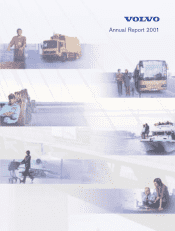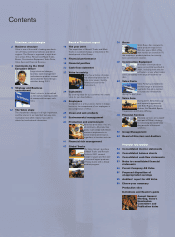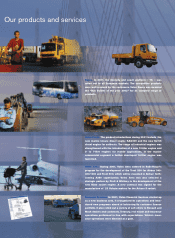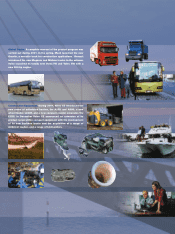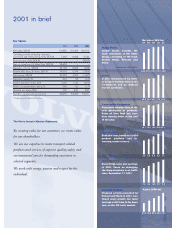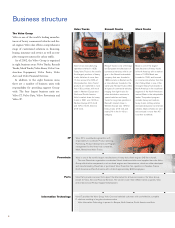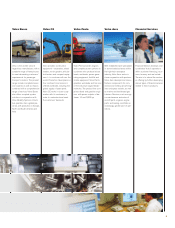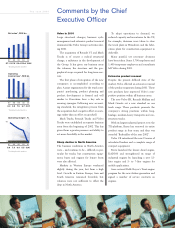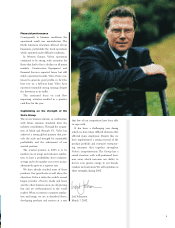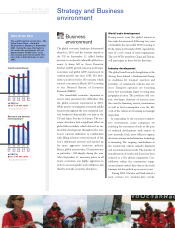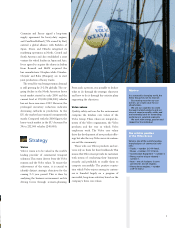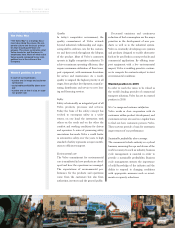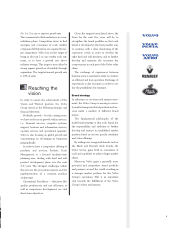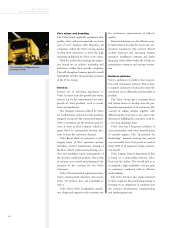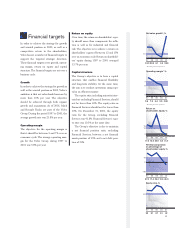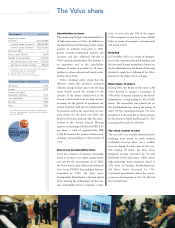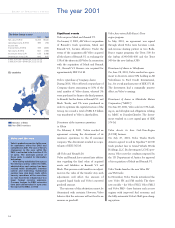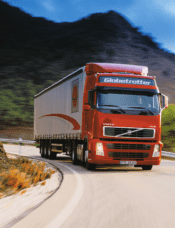Volvo 2001 Annual Report Download - page 10
Download and view the complete annual report
Please find page 10 of the 2001 Volvo annual report below. You can navigate through the pages in the report by either clicking on the pages listed below, or by using the keyword search tool below to find specific information within the annual report.
Strategy and Business
environment
Business
environment
The global economic landscape deteriorated
sharply in 2001 and the terrorist attacks in
the US on September 11 added further
pressure to an already vulnerable global eco-
nomy. A sharp fall in Gross Domestic
Product (GDP) growth was seen in all major
economies and global GDP experienced its
weakest growth rate since 1982. The slow-
down was driven by the US economy, which
entered a recession in March 2001 according
to the National Bureau of Economic
Research (NBER).
The remarkable economic expansion in
recent years generated the difficulties that
the global economy experienced in 2001.
While private consumption remained mildly
buoyant throughout the year, industrial acti-
vity weakened dramatically, not only in the
US and Japan, but also in Europe. The eco-
nomic slowdown had a significant effect on
global labor markets, which showed an un-
favorable development throughout the year.
Lower capacity utilization in combination
with falling oil prices removed much of last
year’s inflationary pressure and opened up
for more aggressive monetary policies.
Hence, global interest rates, US interest rates
in particular – fell sharply during the year.
After September 11, monetary policy in all
major economies was highly aggressive in
order to secure liquidity and confidence and
thereby turn the economic slowdown.
World trade development
During recent years the global interest in
free trade has increased. Following two years
of standstill, the successful WTO meeting in
Doha, Qatar in November 2001, signaled the
start of a new round of trade negotiations.
The new WTO members, China and Taiwan,
will participate in these for the first time.
Industry development
The global trend towards deregulation is the
driving force behind a fundamental change
in conditions for transport operators and
providers of commercial vehicles and ser-
vices. Transport operators are becoming
fewer but increasingly larger, covering large
geographical areas. The products sold con-
tain ever-larger elements of services, since
the costs for financing, service, maintenance
as well as fuel consumption over the life-
cycle of the vehicle are becoming increasingly
important.
In responding to the increased competi-
tive environment, many companies are
searching for economies of scale as the pace
of technical development with respect to
new materials, fuels, more efficient engines,
electronic systems and information technology
is increasing. The ongoing consolidation in
the commercial vehicle industry illustrates
and accentuates these trends. The number of
manufacturers of trucks and buses has been
reduced to a few global competitors. Con-
solidation within the construction equip-
ment industry started later than in the truck
business but has picked up in recent years.
During 2001, Navistar and Ford started a
joint venture for medium-duty trucks,
STRATEGY AND
BUSINESS ENVIRONM ENT
97 98 99 00 01
Capital expenditures*
4.3 4.9 5.2 5.4 8.3
5.0 4.6 4.4 4.5 4.6
n SEK bn
n as % of net sales
* Excluding divested operations
97 98 99 00 01
Research and develop-
ment expenses*
3.6 4.3 4.5 4.9 5.4
4.1 4.0 3.9 4.1 3.0
n SEK bn
n as % of net sales
* Excluding divested operations
Volvo Ocean Race
The world’s premier ocean race – The
Volvo Ocean Race – started in
Southampton, England, in September
2001. During the race, that lasts for
ten moths, the participants will sail
approximately 33,000 miles, cross
four oceans, and visit ten ports. The
race ends in Kiel, Germany, in June
2002.

